Using only his fingers in the soft clay, Canova created this model of Venus and Adonis, maybe in as little as half an hour.
On the back, he pressed his thumb deeply into the clay as he shaped it.
Behind the Scenes
min read
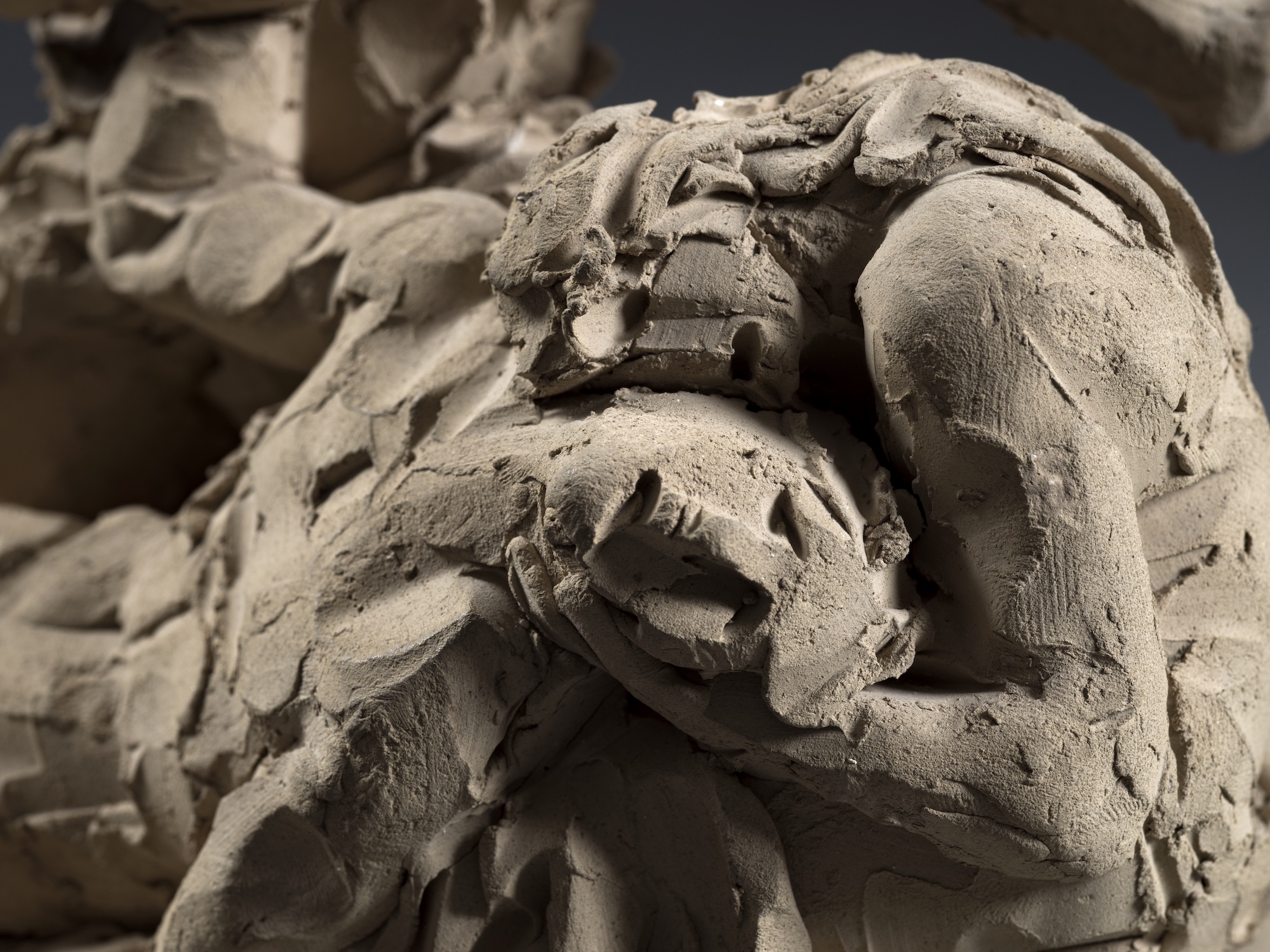
How did Antonio Canova make some of the most iconic works in the history of sculpture? Learn how in this adaptation of Anthony Sigel’s essay Reading Canova’s Hand in Canova: Sketching in Clay.
See these models, as well as his remarkable marble sculptures, in Canova: Sketching in Clay (June 11–October 9).
First, he started in clay. By taking a closer look at his rare surviving models, we can clearly see his fingerprints, the marks of his tools, his signature moves. We can imagine the artist at work.
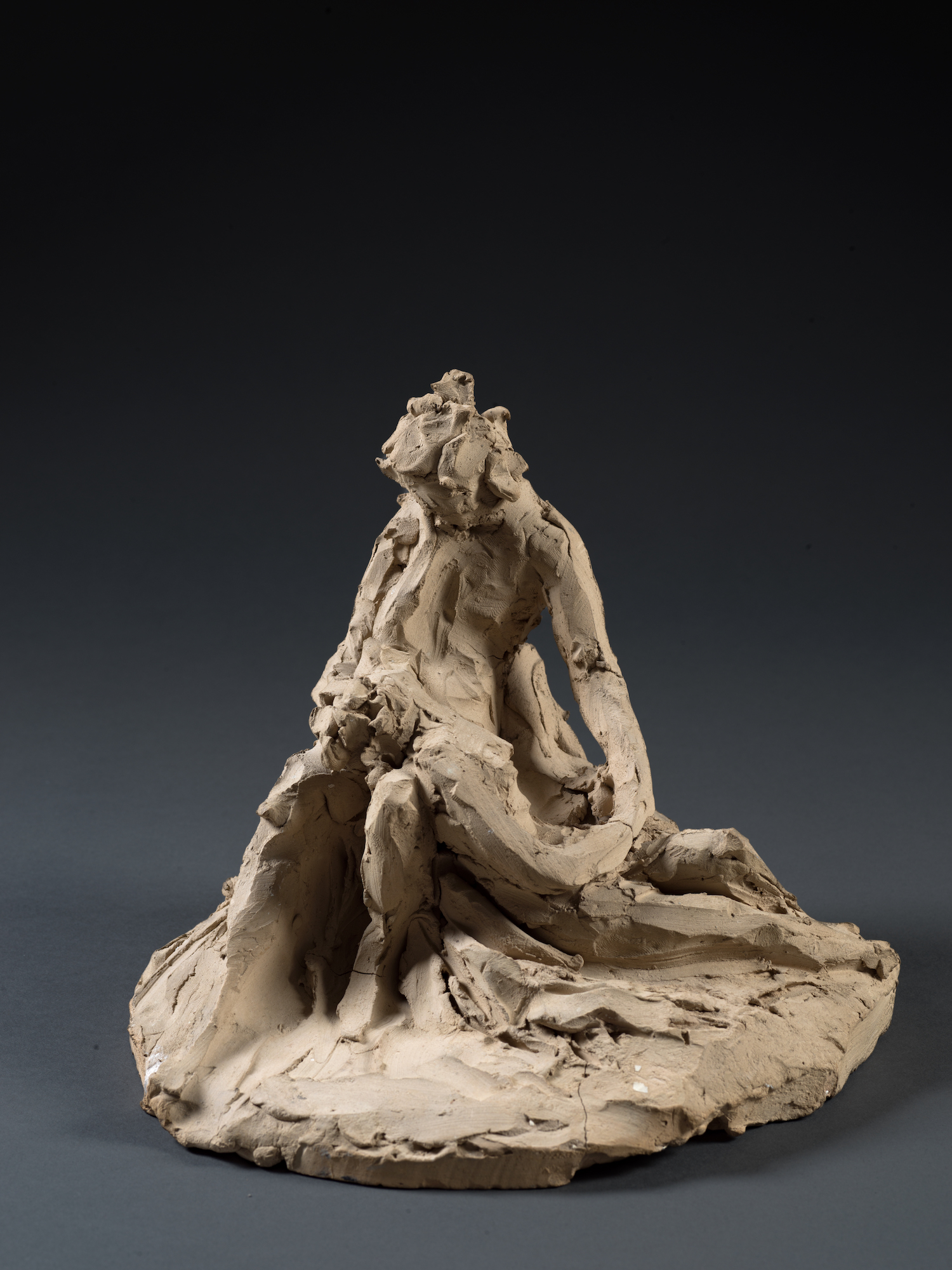
Antonio Canova, Venus and Adonis, c. 1787, terracotta, Museo Gypsotheca Antonio Canova, Possagno, photograph by Luigi Spina
Using only his fingers in the soft clay, Canova created this model of Venus and Adonis, maybe in as little as half an hour.
On the back, he pressed his thumb deeply into the clay as he shaped it.
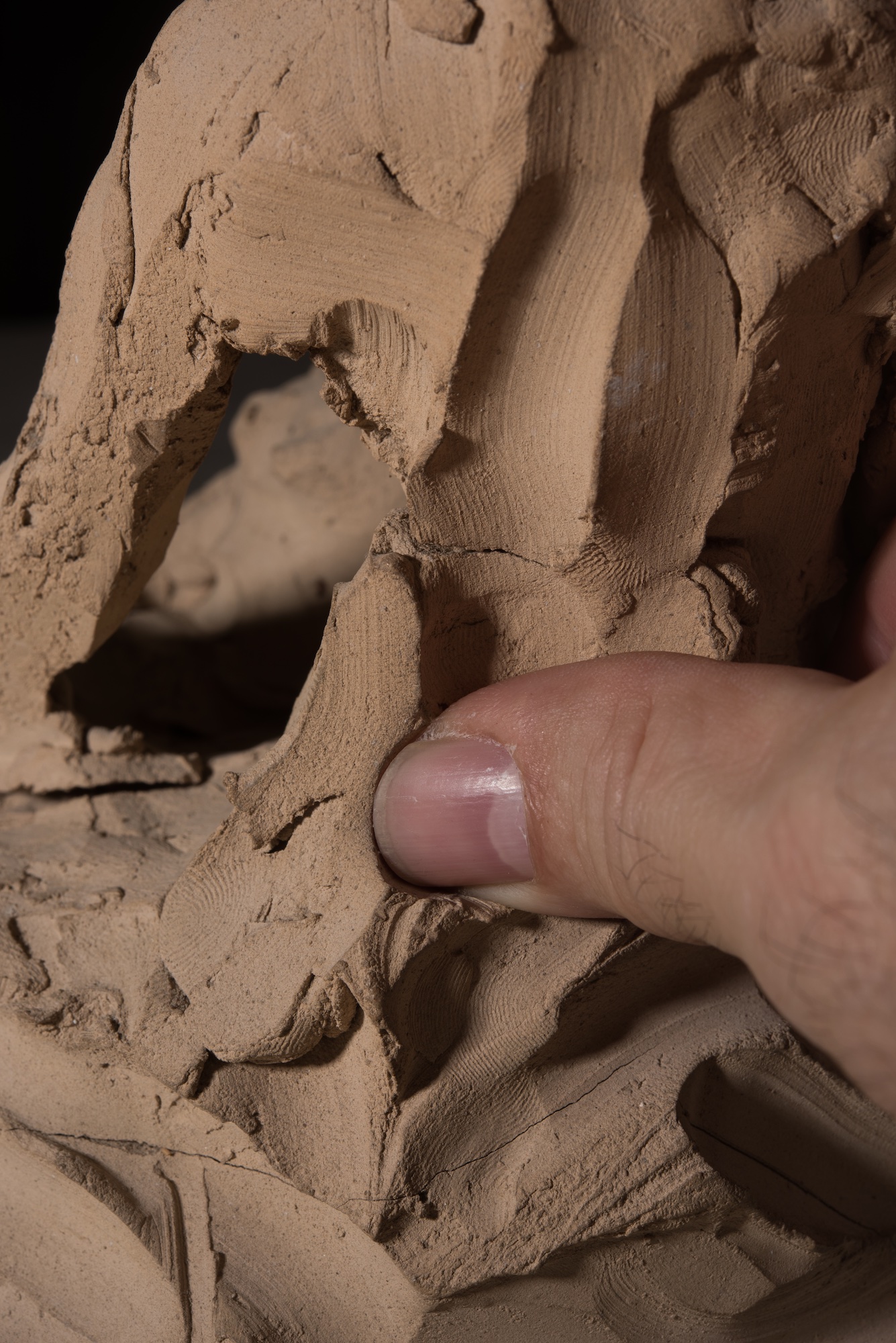
Details of Antonio Canova, Venus and Adonis, c. 1787, terracotta, Museo Gypsotheca Antonio Canova, Possagno, photographs © Anthony Sigel
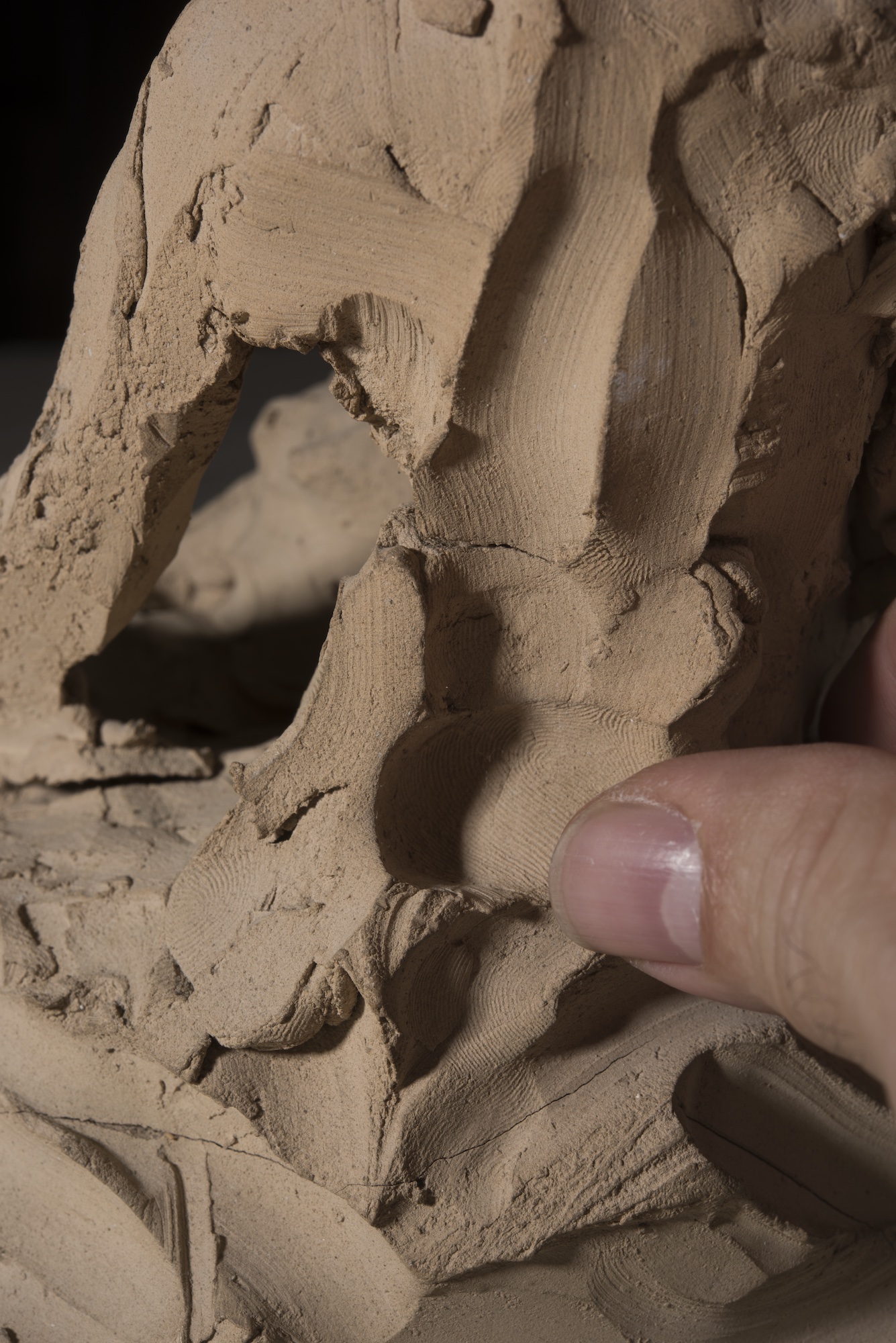
Forming the tangled bodies of the two lovers in swooping, smearing finger strokes, he barely indicated their features.
Instead, he conveyed their emotions through dynamic gestures. And the less detail there is, the more expressive the model becomes.
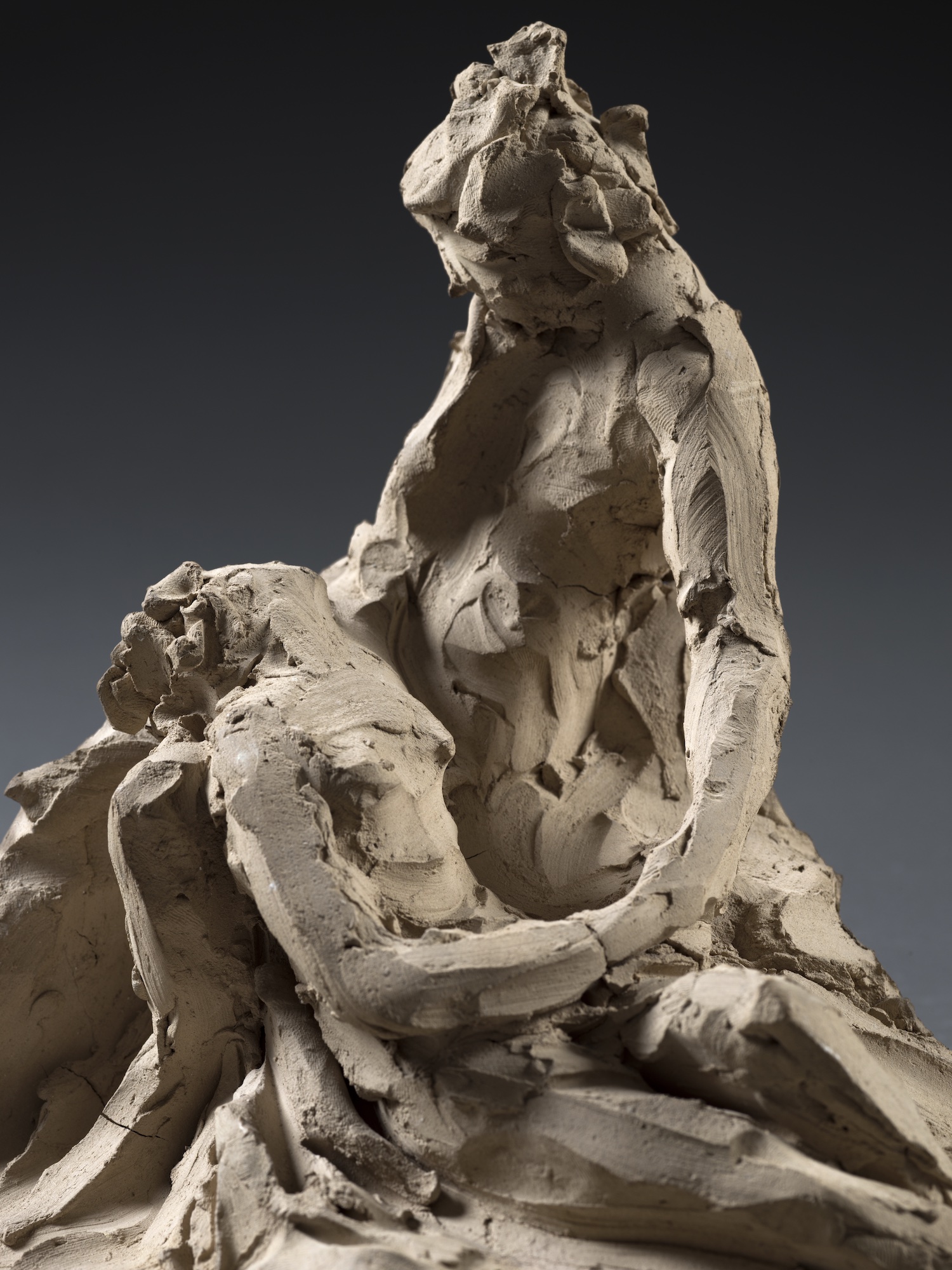
Details of Antonio Canova, Venus and Adonis, c. 1787, terracotta, Museo Gypsotheca Antonio Canova, Possagno, photographed by Luigi Spina
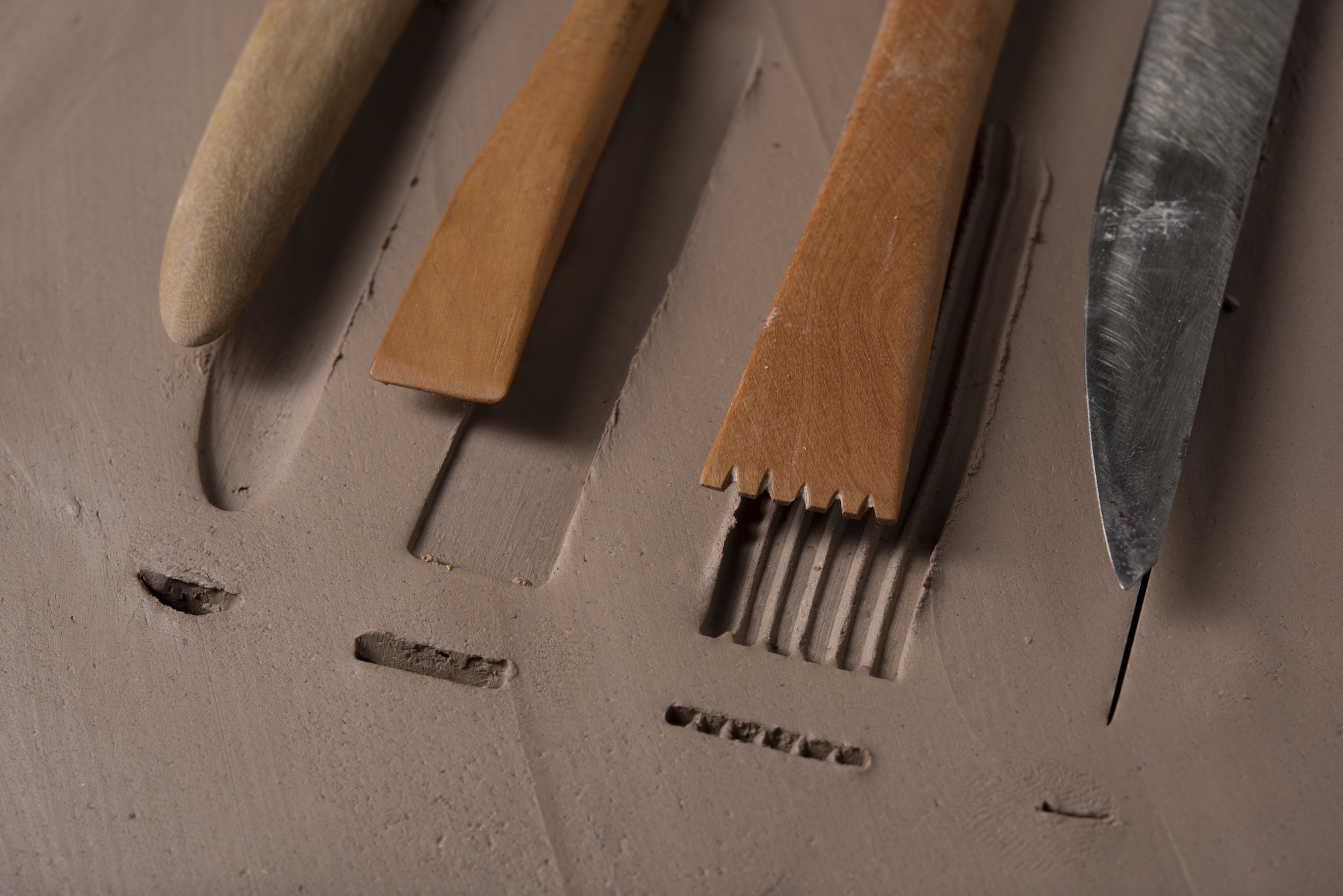
Modeling tools and their marks, photograph © Anthony Sigel
Canova usually began by digging globs of moist clay from a bin in his studio and piling handfuls of it together on his modeling stand. He worked with knives as well as with several other tools in various sizes and with different tips, including oval, chisel, and toothed. Their marks—made when the clay was malleable, like soft ice cream—are clearly recognizable.
Some of Canova’s signature moves combine to create one of his most expressive models: Adam and Eve Mourning the Dead Abel. He shaped it with fingers and two tools—the chisel and oval tip. In a few skillful strokes, he conveyed Adam and Eve’s heart-wrenching grief at seeing their son, Abel, murdered by his brother, Cain.
Twisting an oval tip clockwise, he formed Adam’s and Abel’s left eyes. It is a technique he used in many works.
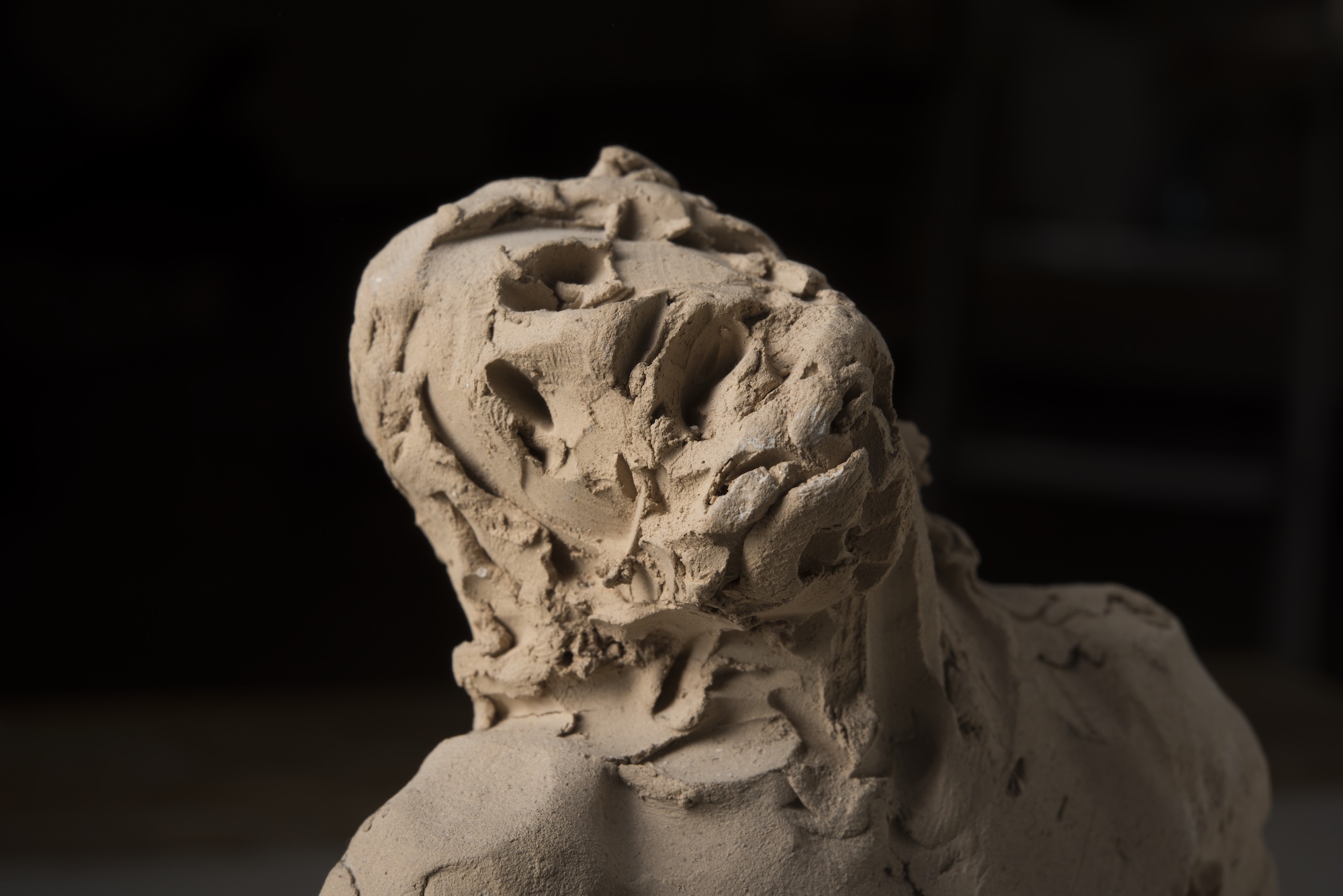
Detail of Antonio Canova’s Adam and Eve Mourning the Dead Abel, c. 1818–1822, terracotta, Museo Gypsotheca Antonio Canova, Possagno, photograph by Luigi Spina
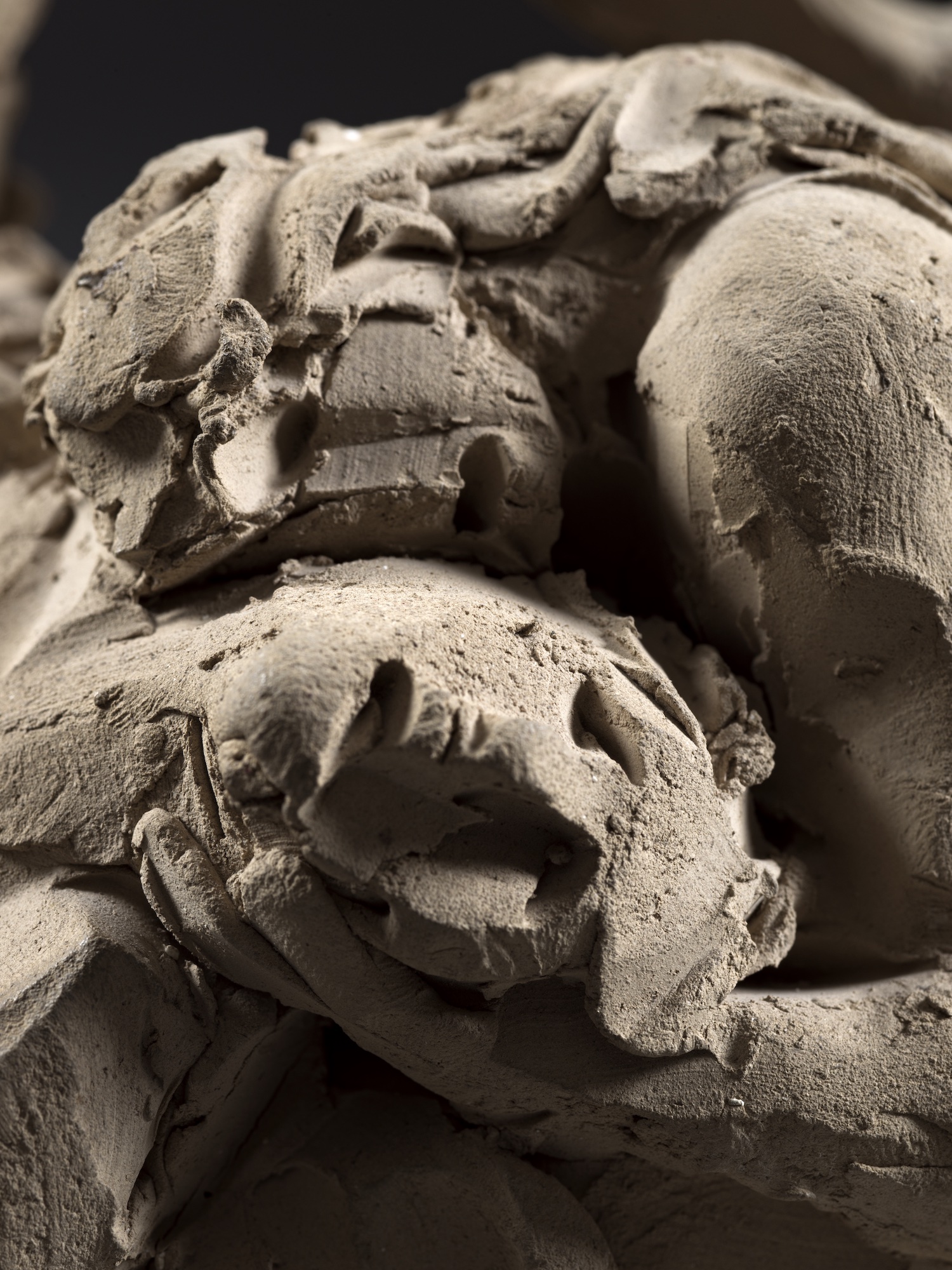
Detail of Antonio Canova’s Adam and Eve Mourning the Dead Abel, c. 1818–1822, terracotta, Museo Gypsotheca Antonio Canova, Possagno, photograph by Luigi Spina
He formed Eve’s face, mouth, and closed eyes with expressive stabbing and scraping. A few quick strokes create Abel’s face. Canova scraped away clay on each side to form the cheeks, leaving the nose proud. He added Eve’s left arm and hand, which cradles her dead son’s head as she presses her right cheek to his.
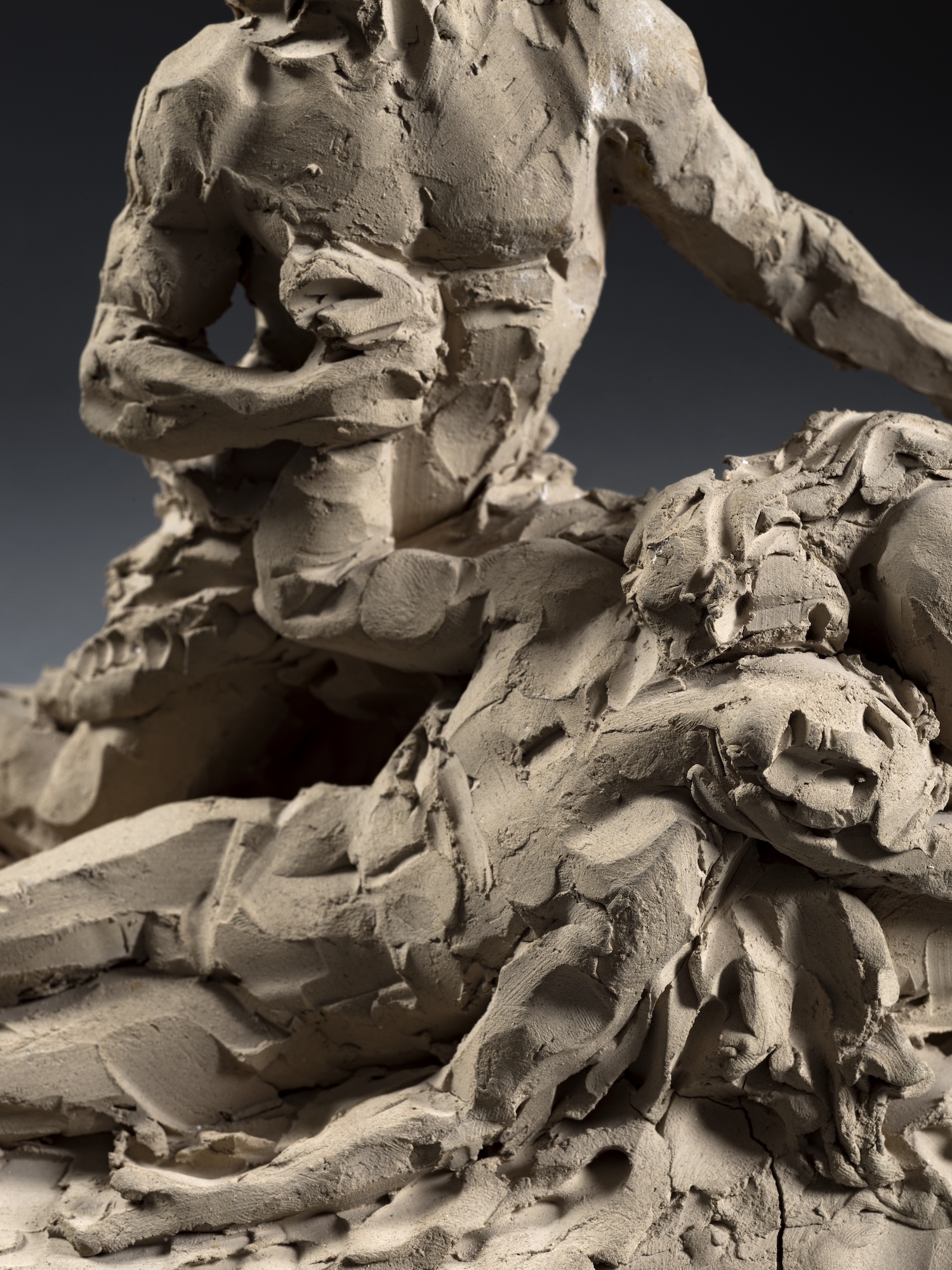
Detail of Antonio Canova’s Adam and Eve Mourning the Dead Abel, c. 1818–1822, terracotta, Museo Gypsotheca Antonio Canova, Possagno, photograph by Luigi Spina
In one of the model’s most gripping details, Adam grasps Abel’s hand to his chest. Canova rolled clay for Abel’s arm, bent it into an L shape, and pressed it against Adam’s chest. He rolled and attached Adam’s arm, narrowing the wrist between his fingers, and pressed Adam’s hand to hold Abel’s wrist. We can see the prints where Canova’s fingers delicately squeezed Adam’s fist and Abel’s hand into shape. The sculptor linked their arms to bend at the same angle, echoing each other.
Canova was an assembler, building up basic shapes and adding clay in larger pieces to form heads, limbs, and drapery. But he knew when to subtract—to carve and scrape clay away as he refined and detailed a feature. For instance, Canova roughly built up Abel’s legs on the base, then gave them shape in higher relief by scraping off the surrounding clay.
He used scraping to form many faces, bases, arms, and legs.
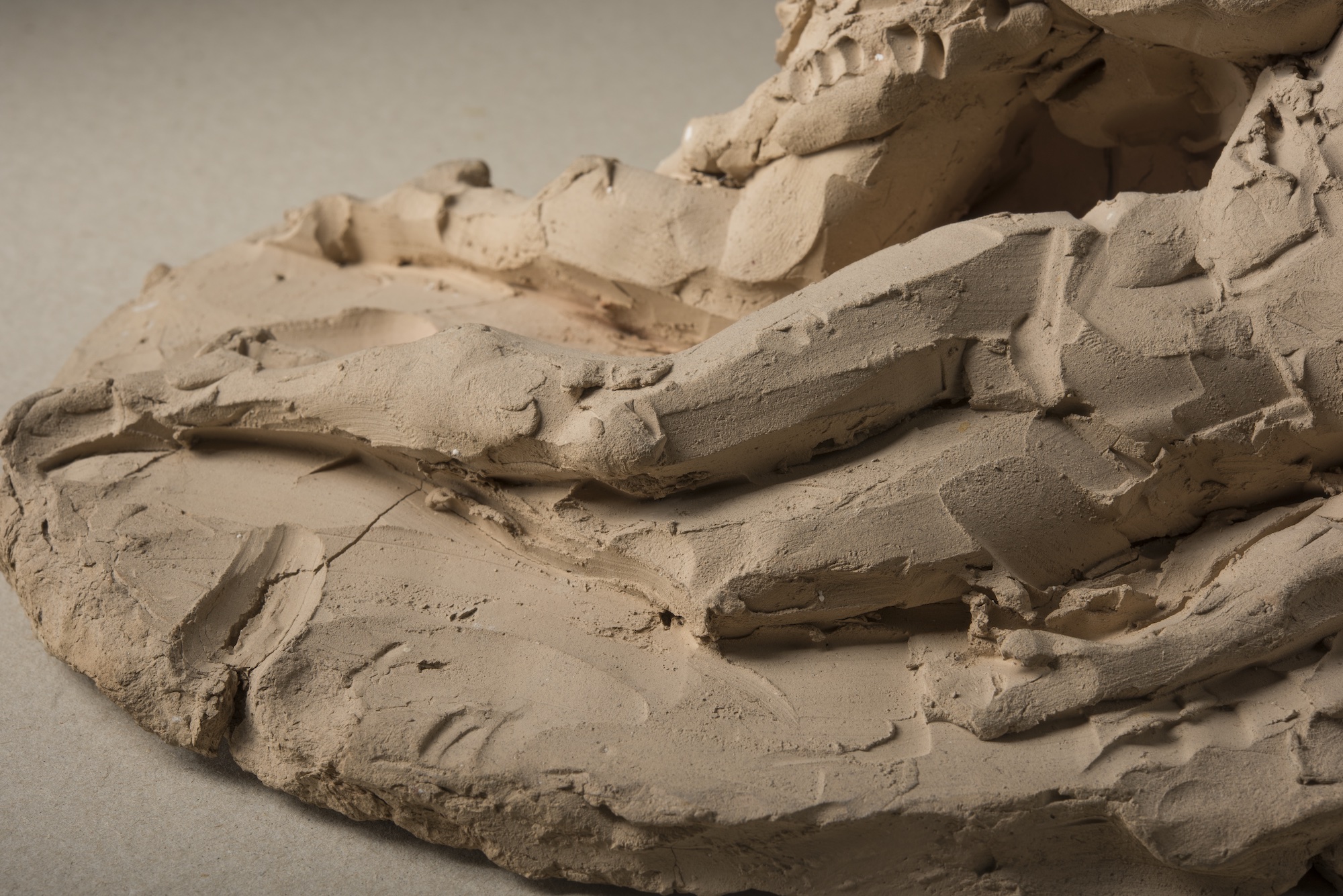
Detail of Antonio Canova’s Adam and Eve Mourning the Dead Abel, c. 1818–1822, terracotta, Museo Gypsotheca Antonio Canova, Possagno, photograph © Anthony Sigel
Canova was very skilled at these techniques. Abel’s legs would have taken no more than a few minutes, and the entire model, no more than an hour or two. Forms came freshly and quickly to his expert hand, as if he were thinking in clay.